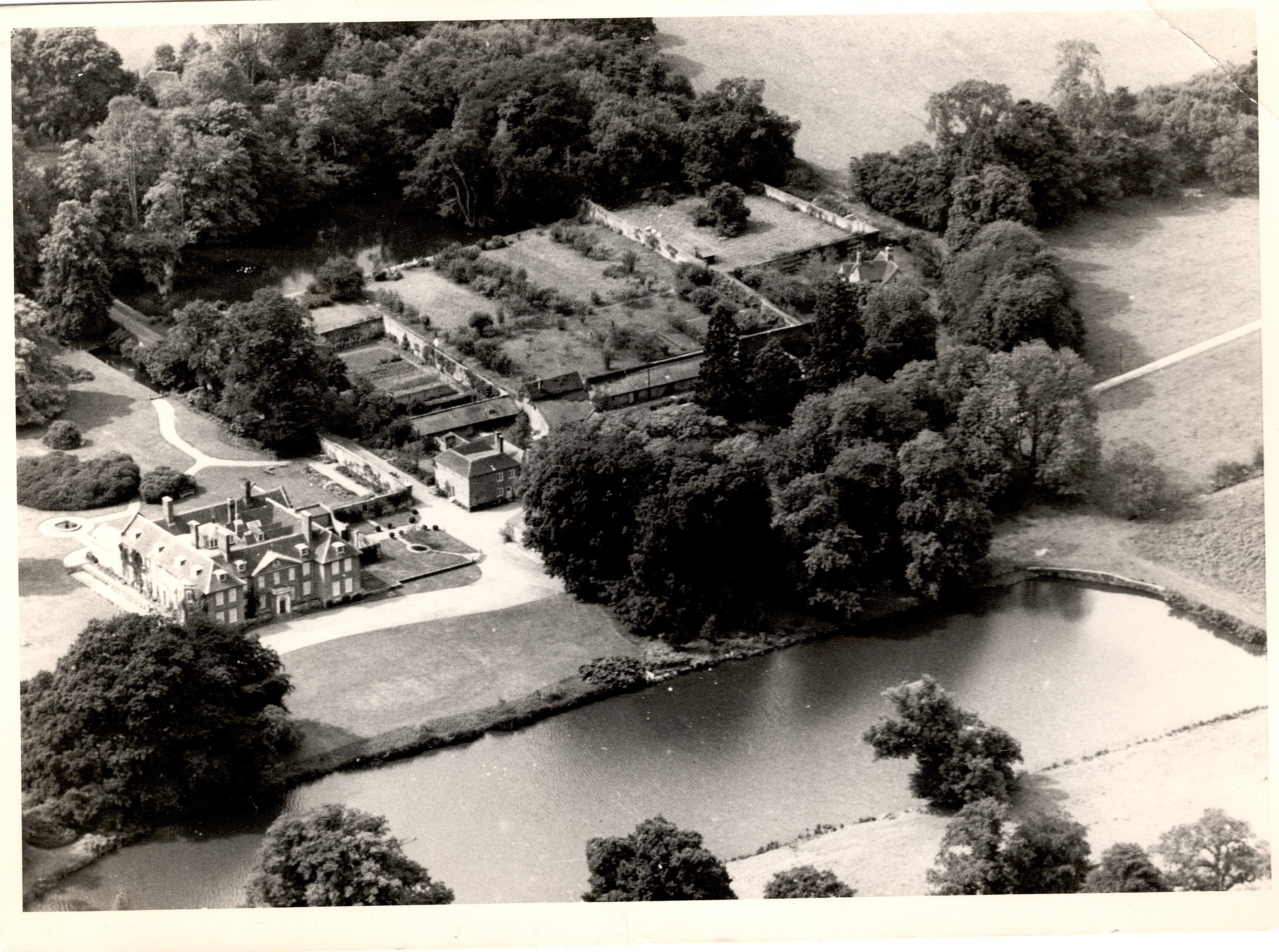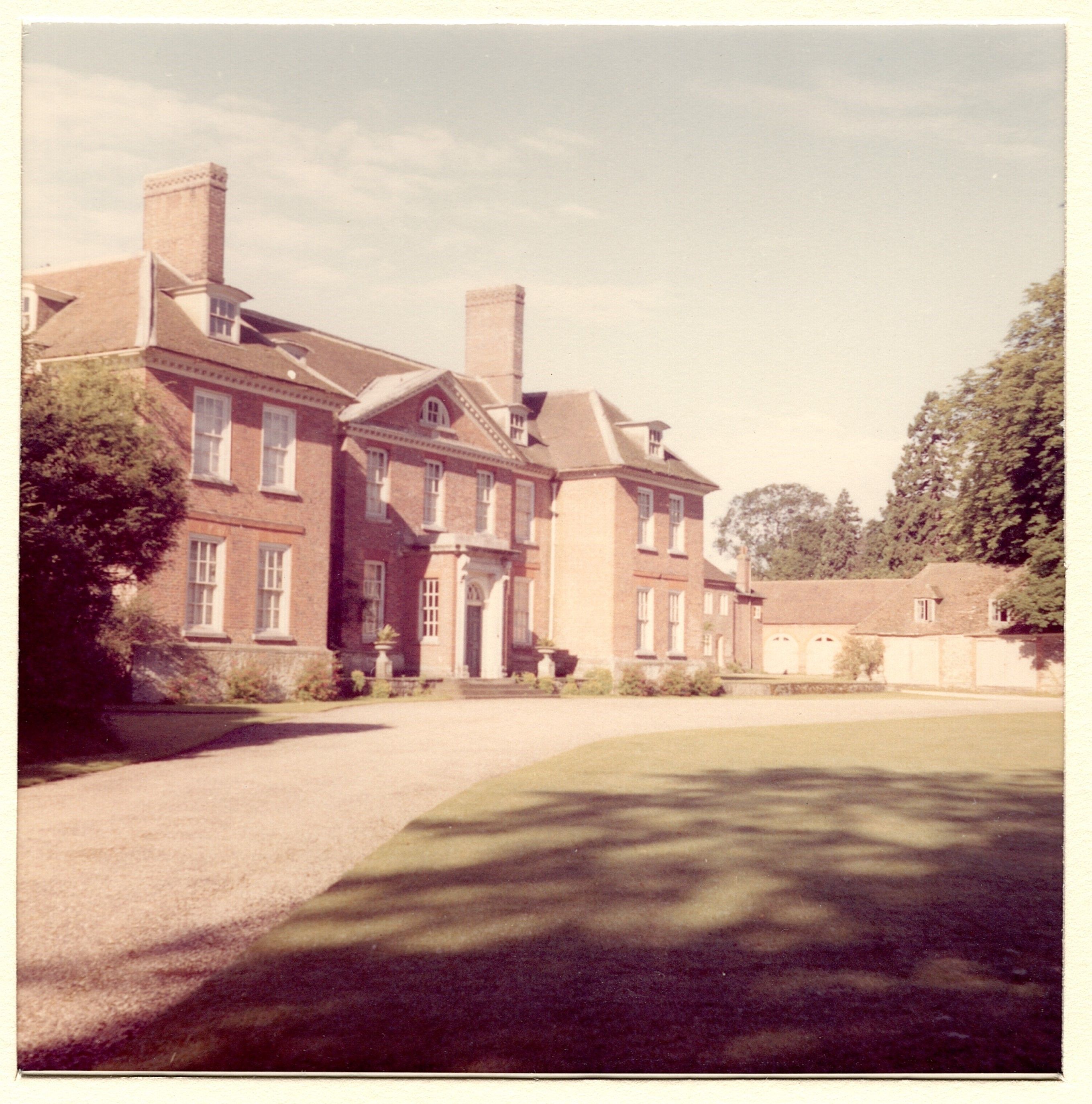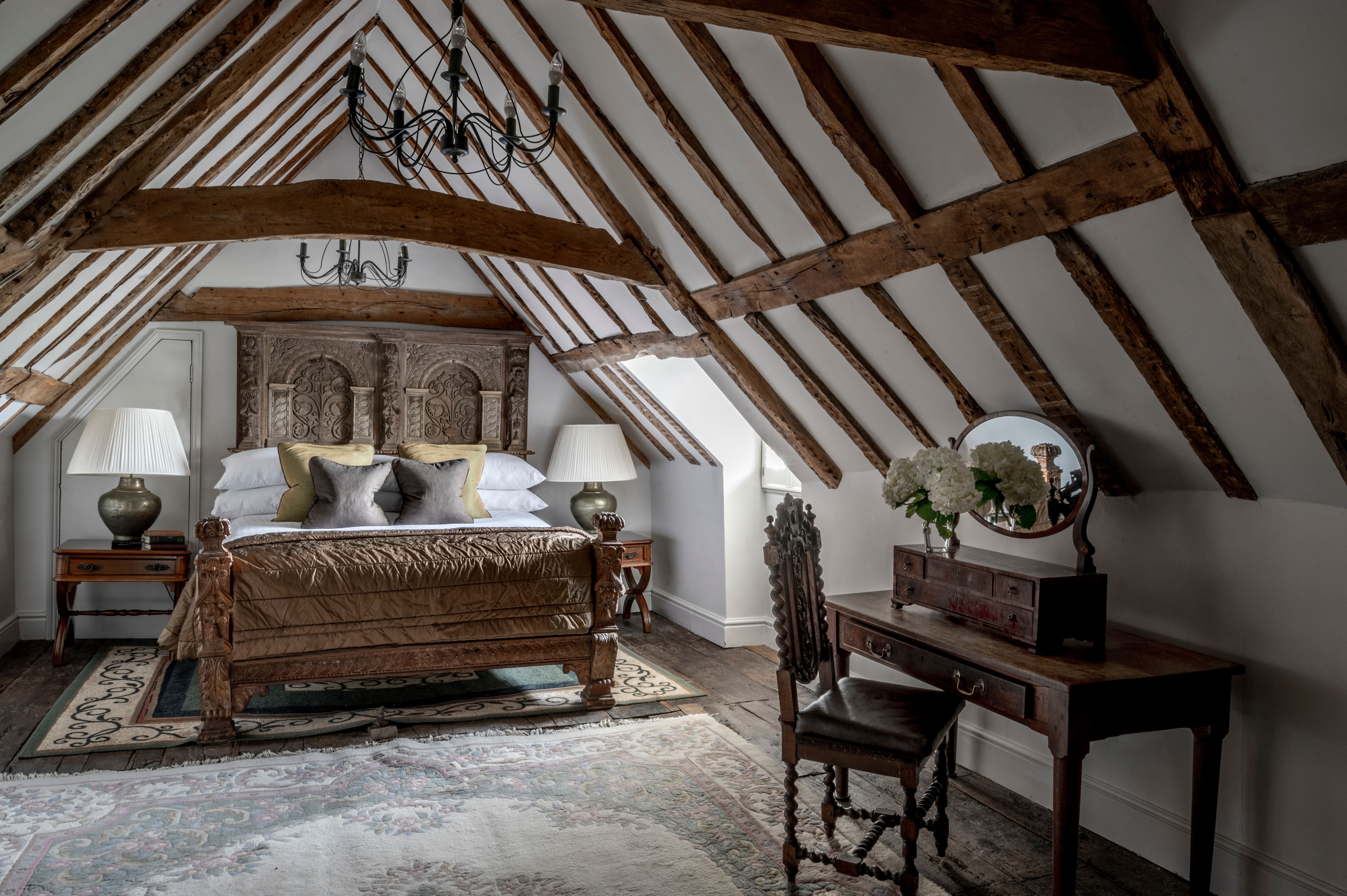History of Chilston Park Hotel
Origins
The Origins of Chilston Park go back at least to 1100 when ‘Childeston’ was owned by the Fitzhamon Lords of Leeds Castle. Childeston means ‘dwelling of the younger son’, which suggests that these lands were originally subject to the old Kentish custom of gavelkind, whereby, estates were shared equally between all surviving sons.
The house, in its present form, is primarily due to the work of the forebears of the 3rd Viscount Chilston in the 19th century.
A 1719 engraving in Harris’ “History of Kent” shows that the walls date from the early 16th century, when it belonged to the House or Hussey family. The inner face of the side walls of the house are of late 15th century diapered brick, and the mounting block in the stable yard is constructed from a 16th century chimney piece, bearing the Hussey coat of arms.
“A sweetly watered place”
John Evelyn, 1666
So wrote John Evelyn, the Restoration diarist, during a visit to Chilston Park in the 1660s. The writer was staying with his cousin Edward Hales, and evidently much appreciated his brief stay in the heart of Kent, far from the plague-ravaged capital.
A Rich History
In 1650, Mr. Edward Hales brought the house. Upon his death, his three daughters inherited the property. It was then sold in 1698 to the Honourable Mrs. Elizibeth Hamilton, daughter of Lord Culpepper of Hollingbourne Manor. Its new owner was succeeded by her third son, William, in 1709.
William Hamilton courted and married his cousin Margaret Culpepper, and together they had a son, John. John Hamilton, High Sheriff, in 1719, enclosed the rolling acres of grassland surrounding the manor and remodelled the front door and porch, leaving it looking much the same as it does today.
The next owner was Thomas Best, Member of Parliament for Rochester, and a member of a well-known Kentish family. During the Best’s occupation between 1736 and 1819, much rebuilding was carried out. Inside, the rooms on the east side were remodelled to accommodate a staircase hall of Chinese Chippendale inspiration, and outside, the grounds were transformed into a picturesque parkland, complete with its own “natural” lake.
The Best’s drained the canal east of the house, but left the pond to the south west of the garden. A sundial in the grounds bears the Best family’s coat of arms and gives quaint bearings to such far-flung locations as Peking.
In 1821, the property passed to George Douglas, the eldest son of Alexander Douglas of Baads, Midlothian, and an event which marked the start of a family connection which was to last until the sale of the house in 1983. The Douglas’s were related to the Akers family of Lancashire, who were involved in the Caribbean sugar trade in the 17th and 18th century.
The head of the Akers family bore the unusual Christian name of Aretas, a name which was to travel through seven generations. Aretas I married Jean Douglas, George’s aunt, in 1752, and in 1795 Aretas II wed the daughter of the Reverend James Ramsay, a keen abolitionist, and rector of Teston. A portrait of Aretas II had been loaned by Lord Chilston to Martin and Judith Miller, and can still be seen in the Star Room within the manor house to this date.
George Douglas, a bachelor, had an adopted daughter named Margaret Brazier, who in 1830 married one of George’s relations, James Stoddart Douglas. He inherited the estate upon George’s death in 1836 and in 1873 the Baads estate in Midlothian was left to him. After the death of his wife, Stoddart Douglas married Sarah Jenkin, whose portrait can be seen in the former morning room next to the orangery.
Akers-Douglas lived at Chilston from 1875 to 1926. As an MP, much of his time was taken up with Commons business, increasingly so when he became Chief Whip to Prime Ministers Salisbury and Balfour. In spite of his frequent absences from his Kentish home, Akers-Douglas was a good and conscientious landlord. In 1883, the estate totalled 3,753 acres, and had a gross annual value of £4,937.
As first Commissioner of Works, Akers-Douglas was responsible for handling the funeral arrangements for Queen Victoria, and the Coronation of King Edward VII. All six of his children married, with the elder son, Aretas VI, entering the foreign office and Diplomatic Service. The younger boy, George Akers-Douglas, pursued a career in the army and later in the City. George married Doris Christopherson in 1909, and produced two sons and a daughter. The present and 4th Viscount is the son of Ian Akers Douglas, who was the elder son of Lt. Colonel George and Doris.
During these years, their sons Bob and Eric, spent much of their time on the Kentish estate, using their former schoolroom on the south side as a general living room while their parents were away. A shadow of sadness crept over Chilston in 1940 when Bob Akers-Douglas died in a road accident in France. Shortly before the tragic accident, Bob married Marcai Brace, a second marriage for both of them. Their life together was brief, but what it lacked in length it made up for in happiness. Bob’s distraught widow did not long survive him, and both are buried at Boughton Malherbe. So it was the younger of the two brothers, Eric, at this time unmarried and in the RAF, who became heir to his father.
Lord Chilston was a familiar and popular figure to the local people, often spotted cycling the lanes of Lenham during the petrol-rationed days of the Second World War. He died in 1947, leaving those who knew him with the memory of his wit, courtesy and wisdom.
His son Eric, now the 3rd Viscount, was working in the Foreign Office when he inherited Chilston Park. At the end of the war he had been sent to Germany and Austria to select and collect German records, and later worked with Professor Arnold Toynbee on a pre-war survey, contributing a chapter of re-armament.
Becoming a country house hotel
The property remained in the Chilston family until the death of the 3rd Viscount in 1982. Two years later it was bought by Martin and Judith Miller, the well-known antiques authorities and authors of Miller’s antiques guide who, while keeping its period atmosphere, ran it as a comfortable first-class country house hotel and conference centre.
Now under the ownership of Hand Picked Hotels, a group of 21 country house hotels and island retreats across the UK and Channel Islands, Chilston Park remains the epitome of the classic English country house. An extension to the old house was completed in 1997, adding a further 15 contemporary bedrooms, and 2 meeting rooms and
also hosts our reception area.
Elizabeth Bett’s Diary
Scullery maid from 1938 -1942
Chilston Park
My Fascinating Island
“From the moment I opened the large gate, the sort that you stand on and swing to and fro, I was fascinated. A very long drive with meadow and trees, very quiet and peaceful. In front of the lake was a large grey stone house, partly covered with reddish green ivy.
Edith the housekeeper opened the door and I was introduced to staff, then up the back stairs to my own little bedroom. One white bed, white chair in front of the window which overlooked the courtyard, a white dressing table and wardrobe. Outside the back door I discovered a wonderful engine which generated the electricity.
The house itself is such a beautiful place. If the family were away for the day, because Edith knew I was genuinely interested, would take me through the front of the house to see wonderful things. The family crest on everything. Pictures, portraits done by Lady Chilston. There was one of His Lordship in his study, so life like you expected it to speak. Past the back door was a large pond where ducks and swans swam. One family of ducklings would waddle in the back door all in line and wait at the kitchen door for crumbs etc.
Sometimes the swans needed to be on the front lake and old Steadman, as he was known, would grab hold of the beak and fold the wings under his arm and carry them along. There was a boat hut near the lake and when the 4th Battalion SLI were stationed under canvas in the park it was used when they had an exercise on the lake. On the bank by the lake I often stood and listened to the bugler playing “light out” or “last post”. The CO used the servants’ hall as his office.
The milk girl delivered milk and cream on her bicycle and often a second delivery of cream in the evening. Mr Cooper was the gamekeeper mho brought in rabbits, pheasants, partridge, pigeons etc. Mr Foreman and his wife lived in the cottage outside the first gate, and of course brought in fresh vegetables every day, fruit from the wonderful gardens and there was always some for the servants. Must not forget “Pilot” the large block carthorse. To me everything was so interesting, people, animals machinery, I could forget the hours of work, I was tiny and 14 years old and it was wonderful”


